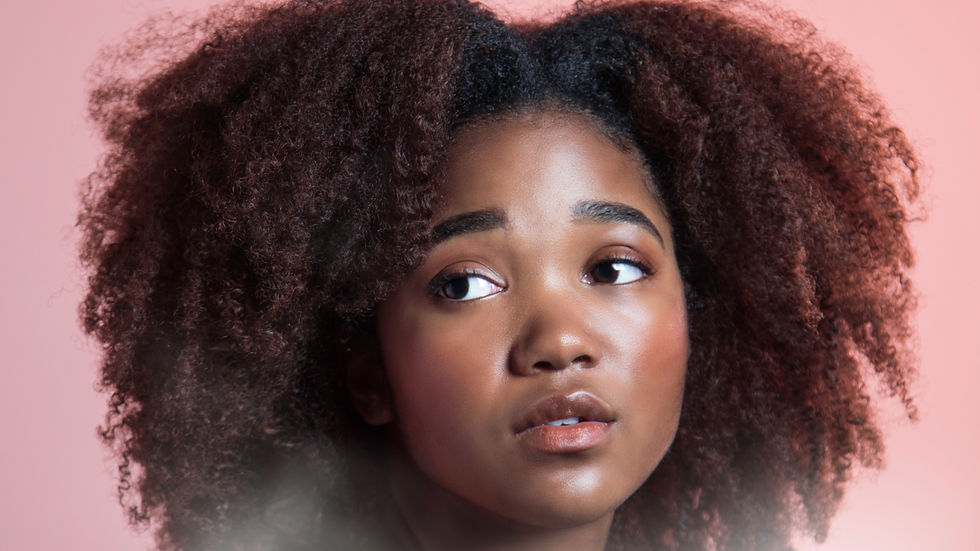How Black Women Are Overexposed to Toxins in Personal Products More Than Other Ethnic Groups
- Madi Fay

- Oct 2, 2023
- 3 min read
Updated: Feb 5, 2024
The Campaign for Safe Cosmetics (CSC) has released its Non-Toxic Black Beauty Project report after continued reports showing Black women being disproportionately exposed to toxic chemicals in the workplace, their communities, and their beauty and personal care products.

The CSC is a program from the Breast Cancer Prevention Partners (BCPP), a national, science-backed advocacy organization committed to preventing breast cancer caused by toxic chemicals and other environmental exposures.
According to the CSC, the ingredients used in personal care products most often marketed to Black communities contain some of the most toxic chemicals found in any personal care products. Some chemicals have been linked to breast and ovarian cancer, uterine fibroids, reproductive and fertility harm, endocrine disruption, and more.
What might be surprising to learn from the CSC’s report is that this act of including toxic ingredients is, apparently, legal for these companies. The FDA does not currently have the authority to implement pre-market safety testing of the components used in cosmetic products.
While including toxic chemicals is problematic for anyone using these products, it’s of the highest concern for the Black community because of the statistics surrounding the topic. Black women purchase and use more beauty products per capita than any other demographic.
Overall, Black women spend more than $7.5 billion on beauty products. What exactly does this increase in purchasing mean for Black women? It’s pretty simple, according to the CSC: if more Black women purchase these products with toxic ingredients, more Black women are disproportionately exposed to the harmful components.
When Dr. Ami Zota and Dr. Bhavna Shamasunder first reported on this disproportionate exposure of chemicals to the Black community, they declared it an environmental justice concern, attributing much of it to traditional eurocentric beauty norms, which have long-term consequences on Black women’s health and well-being.

What might be the most convincing evidence, proving the CSC’s claims of overexposure, would be the increasing studies of Black women with higher levels of beauty product-related environmental chemicals in their bodies. This information, paired with reports that even a tiny amount of exposure could lead to adverse health effects, is why the CSC calls for immediate action in the personal care and beauty space.
Studies have also shown that Black women exposed to hair straighteners and permanent hair dye have a higher risk of developing breast cancer. In fact, according to the studies, women who used darker permanent hair dye faced a 60% increase in breast cancer risk, while white women only faced an 8% increase in risk. Likewise, Black women who used chemical hair straighteners faced a 30% greater risk of breast cancer than white women.
This information becomes increasingly more alarming when paired with different reports that show breast cancer mortality rates among Black women to be significantly greater than White, Asian, or Hispanic women. The CSC has shed light on an issue affecting the Black community, but what can be done to combat it?

CSC Black Beauty Project's 5 Goals to Tackle Injustice
Goal #1: Create a List of Non-Toxic Beauty Products
This list will consist of products free of toxic ingredients and created by Black-owned beauty brands. In doing so, the CSC hopes Black women will feel safe and confident that their products are not saturated with chemicals tied to adverse health effects.
Goal #2: Develop and Share Tip Cards and Other Resources
The project plans to develop additional resources on product ingredients so that Black women can make educated purchasing decisions.
Goal #3: Grow Safe Black Beauty Industry
The project will elevate Black-owned beauty brands making safe beauty and personal care products for Black women and provide technical support to Black-owned brands that want to produce safe products but don’t currently have the means.
Goal #4: Raise Awareness
Through continued resources, such as the Black Beauty Project report, the CSC will raise awareness among the public, manufacturers, and retailers about the toxic chemicals in various beauty and personal care products.

Goal #5: Expand Red List
The project will expand its Red List to include chemical ingredients that could induce possible health complications amongst Black women, including allergic reactions, diabetes, early puberty, infertility, endometriosis, early menopause, less successful IVF outcomes, maternal health, ovarian cancer, polycystic ovarian syndrome (PCOS), pregnancy complications, preterm births, and uterine fibroids.
Take Action
Be vigilant in reading product labels to avoid toxic chemicals from entering your body. The Black Beauty Project listed some toxic chemicals to look out for and some non-toxic beauty products you can try instead; get familiar with this list. Tell your friends and families about their mission, and visit their website to see how you can further get involved in their mission. Even if you're not the affected gender or race, you can still get involved!





.png)


